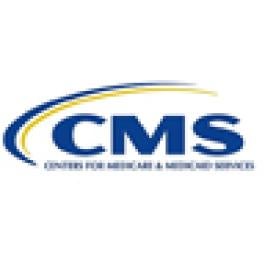4. Six procedures are removed from the inpatient-only list; one procedure is added.
CMS looks to five criteria when considering removing procedures from the inpatient-only list:
- Most outpatient departments are equipped to provide the services.
- The simplest procedure described by the procedure code proposed for elimination may be performed by most outpatient departments.
- The procedure is related to previously removed codes.
- Numerous hospitals are performing the procedure in outpatient settings.
- The procedure can be performed safely in an ASC and is on the ambulatory surgery center list of approved procedures or is proposed for inclusion on that list.
In the OPPS Final Rule, CMS finalized its proposal to remove Current Procedural Terminology (CPT) codes 27447 (total knee arthroplasty) and 55866 (surgical laparoscopic prostatectomy) from the inpatient-only list, as both procedures were found to meet Criteria 1 and 2 set forth above. Regarding CPT code 27447, CMS reminded providers that removal from the inpatient-only list is not a blanket authorization to perform the procedure in outpatient settings. Physicians should continue to exercise their medical judgment and weigh several factors, including comorbidities, the expected length of stay (in accordance with the two-midnight rule), the anticipated need for post-operative skilled nursing care, and other factors. Notably, CMS prohibited Recovery Audit Contractors from reviewing total knee arthroplasty procedures that are performed in the inpatient setting for two years to allow providers time to gain experience with determining the most appropriate setting to perform the procedures and to establish patient selection criteria to assist in the determination.
CMS also considered additional recommendations to remove or add procedures to the inpatient-only list. Four additional laparoscopic procedures (CPT codes 43772, 43773, 43774 and 55866) were found to meet removal Criteria 3. One procedure for treatment of patients who experience an acute, emergent myocardial infarction (CPT code 92941) was added to the inpatient-only list.
| Table 1. 2018 Changes to the Inpatient-Only List | ||
| CY 2018 CPT Code | CY 2018 Descriptor | Status |
| 27447 | Arthroplasty, knee, condyle and plateau; medial AND lateral compartments with or without patella resurfacing (total knee arthroplasty) | Removed Criteria 1 and 2 |
| 43282 | Laparoscopy, surgical, repair of paraesophageal hernia, includes fundoplasty, when performed; with implantation of mesh | Removed Criteria 3 |
| 43772 | Laparoscopy, surgical, gastric restrictive procedure; removal of adjustable gastric restrictive device component only | Removed Criteria 3 |
| 43773 | Laparoscopy, surgical, gastric restrictive procedure; removal and replacement of adjustable gastric restrictive device component only | Removed Criteria 3 |
| 43774 | Laparoscopy, surgical, gastric restrictive procedure; removal of adjustable gastric restrictive device and subcutaneous port components | Removed Criteria 3 |
| 55866 | Laparoscopy, surgical prostatectomy, retropubic radical, including nerve sparing, includes robotic assistance, when performed | Removed Criteria 1 and 2 |
|
92941 |
Percutaneous transluminal revascularization of acute total/subtotal occlusion during acute myocardial infarction, coronary artery or coronary artery bypass graft, any combination of intracoronary stent, atherectomy and angioplasty, including aspiration thrombectomy when performed, single vessel |
Added |
5. Seven new telehealth procedures will be paid under PFS; CMS will add appropriate CPT codes for remote patient monitoring.
When CMS considers paying for telehealth services under the PFS, several criteria must be met:
- The procedure must be furnished via an interactive telecommunications system.
- The procedure must be furnished by a physician or an authorized practitioner.
- The procedure must be furnished to an eligible patient.
- The patient must receive the services at a telehealth originating site.
CMS then pays a facility fee to the originating site and makes a separate payment to the distant site provider who furnishes the professional component of the service.
In the 2018 PFS Final Rule, CMS established the 2018 facility fee for originating sites to be the lesser of 80 percent of the actual charge or $25.76. Originating sites should continue to use Healthcare Common Procedure Coding System (HCPCS) code Q3014 (telehealth originating site facility fee). The PFS Final Rule also resulted in seven new telemedicine professional service codes that distant site providers may use to submit claims under PFS beginning on January 1, 2018:
- HCPCS G0296 – Counseling visit to discuss need for lung cancer screening using low dose CT scan.
- CPT 90839 – Psychotherapy for crisis; first 60 minutes (listed separately in addition to code for primary service).
- CPT 90840 – Psychotherapy for crisis; each additional 30 minutes (listed separately in addition to code for primary service).
- CPT 90785 – Interactive complexity (to be used as an add-on for other telehealth codes).
- CPT 96160 – Administration of patient-focused health risk assessment instrument with scoring and documentation, per standardized instrument (to be used as an add-on for other telehealth codes).
- CPT 96161 – Administration of caregiver- focused health risk assessment instrument with scoring and documentation, per standardized instrument (to be used as an add-on for other telehealth codes).
- HCPCS G0506 – Comprehensive assessment and care planning for patients who require chronic care management system (listed separately in addition to primary monthly care management service).
Most professional claims are no longer required to apply a GT modifier for telehealth services. Rather, Place of Service code 02 should be used to indicate the service was provided via telehealth and that the provider certifies the aforementioned criteria have been met. However, distant site providers billing under Critical Access Hospital Method II and others submitting institutional claims should continue to use the GT modifier. CMS is considering adopting a uniform 95 modifier to identify all telehealth services and may propose its use in future rulemaking.
In the proposed PFS rule, CMS requested comments on whether to make separate payment for CPT codes that describe remote patient monitoring. These services are not generally considered Medicare telehealth services because there is not a direct interaction between a practitioner and a beneficiary. In the PFS Final Rule, CMS identified CPT 99091 (collection and interpretation of physiologic data digitally stored and/or transmitted by the patient and/or caregiver to the physician or other qualified health care professional that requires a minimum of 30 minutes of time) as a bundled code that is appropriate for separate payment. Practitioners must obtain advance beneficiary consent for remote patient monitoring services, must document such consent in the patient’s medical record, and must have had a face-to-face, Level 2‒5 evaluation and management visit with the patient within one year prior to using the code. CMS anticipates that coding changes may be necessary to describe the role of remote patient monitoring in contemporary practice, but separate billing for CPT 99091 should be seen as auspicious news to the mobile health community.
6. Six Hospital Patient Quality Reporting Program quality measures are eliminated from future consideration; one quality measure is delayed as proposed.
| Table 2. 2018 Changes to Hospital Patient Quality Reporting Program Quality Measures List | ||
| Measure Number | Description | Final Action |
| OP-21 | Median time to pain management for long bone fracture | Eliminated effective 2020 |
| OP-26 | Volume data on selected outpatient surgical procedures | Eliminated effective 2020 |
| OP-1 | Median time to fibrinolysis | Eliminated effective 2020 |
| OP-4 | Administration of aspirin upon presentation of chest pain | Eliminated effective 2020 |
| OP-20 | Door to diagnostic evaluation by qualified medical personnel | Eliminated effective 2020 |
| OP-25 | Safe surgery checklist use | Eliminated effective 2020 |
|
OP-37a-e |
Outpatient and ambulatory surgery consumer assessment of health care providers and systems |
Delay in adopting until future rulemaking |
7. Three ASC Quality Reporting Program quality measures are eliminated from future reporting; one quality measure is delayed; two quality measures are added.
| Table 3. 2018 Changes to the ASC Quality Reporting Program Quality Measures List | ||
| Measure Number | Description | Final Action |
| ASC-5 | Prophylactic IV antibiotic timing | Eliminated beginning with 2019 payment determination |
| ASC-6 | Using safe surgery checklists | Eliminated beginning with 2019 payment determination |
| ASC-7 | Facility capacity and surgery procedure volume | Eliminated beginning with 2019 payment determination |
| ASC-15a-e | Outpatient and ambulatory surgery consumer assessment of health care providers and systems | Delayed implementation beginning with 2020 payment determination until future rulemaking |
| ASC-16 | Toxic Anterior Segment Syndrome (TASS) after anterior segment eye surgery | Was included in proposed rule but not added in the Final Rule. CMS recognizes the measure is difficult to implement and is applicable only to very specific ASC facilities where TASS occurs. |
| ASC-17 | Seven-day unplanned hospital visits after orthopedic ambulatory surgery center procedure | Added for 2022 payment determination and subsequent years |
|
ASC-18 |
Seven-day unplanned hospital visits after urology ambulatory surgery center procedures |
Added for 2022 payment determination and subsequent years |




 i
i

